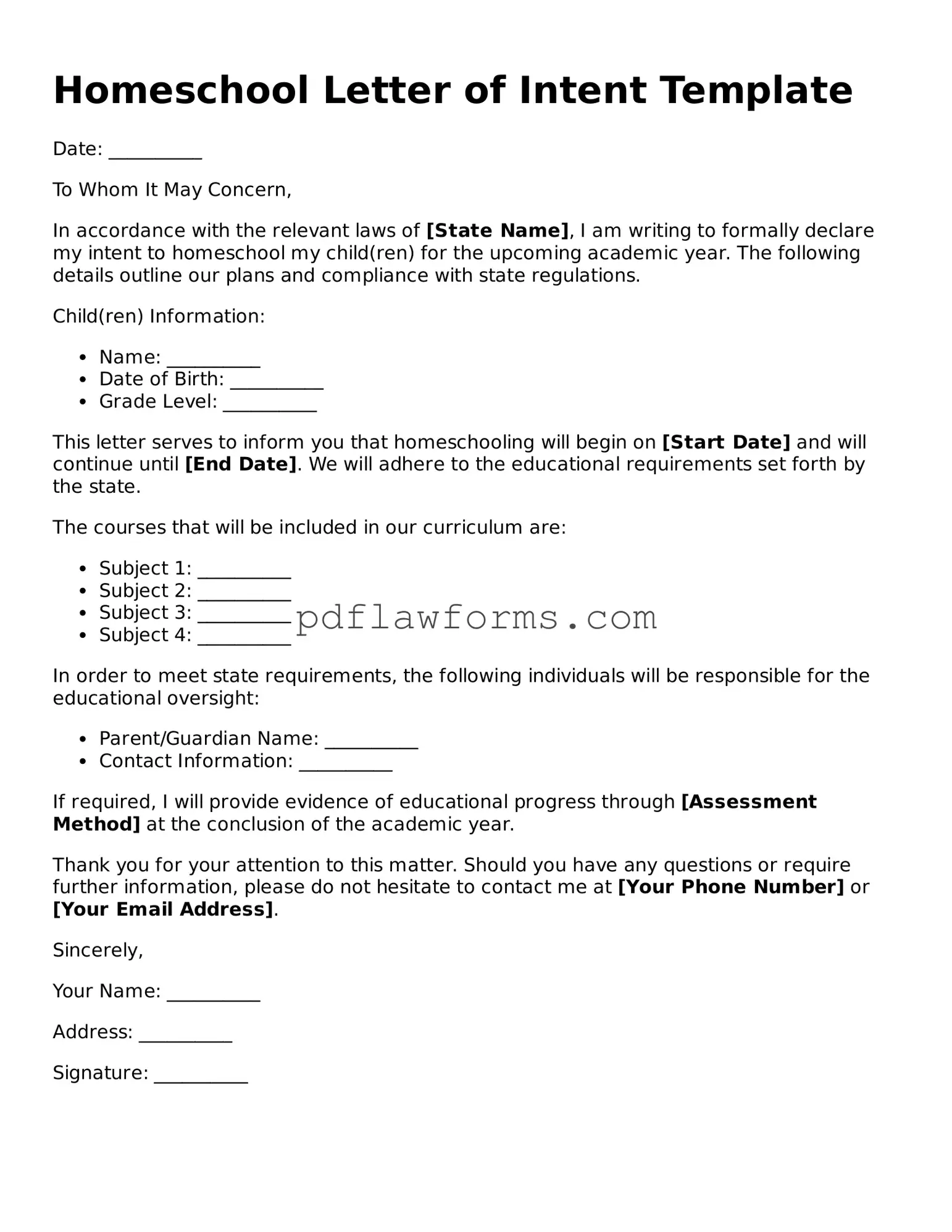Filling out the Homeschool Letter of Intent form is a crucial step for families choosing to educate their children at home. However, many individuals encounter common pitfalls that can lead to unnecessary complications. Understanding these mistakes can help ensure a smoother process.
One frequent error is incomplete information. The form requires specific details about the student, including their full name, age, and grade level. Omitting any of these critical pieces of information can result in delays or even rejection of the letter. It’s essential to double-check that all requested details are filled out accurately before submitting.
Another mistake involves incorrect submission methods. Some families may assume that any form of communication is acceptable. However, many school districts have specific requirements for how the letter should be submitted—whether by mail, email, or in person. Failing to adhere to these guidelines can lead to confusion and may cause the letter to be overlooked.
Additionally, people often overlook the importance of timely submission. Each state has its own deadlines for submitting the Homeschool Letter of Intent. Missing these deadlines can result in complications, such as being required to submit additional paperwork or facing penalties. Keeping track of these dates is vital for compliance and peace of mind.
Another common issue is the lack of clarity in the educational plan. While the form may not require a detailed curriculum outline, providing some insight into the educational approach can be beneficial. A vague or overly simplistic description may raise questions from school officials, leading to further inquiries or a request for additional information.
Finally, many individuals fail to keep a copy of the submitted form. Retaining a copy is important for personal records and can serve as a reference point in case any issues arise later. Having documentation readily available can make it easier to address any questions or concerns that may come up in the future.
